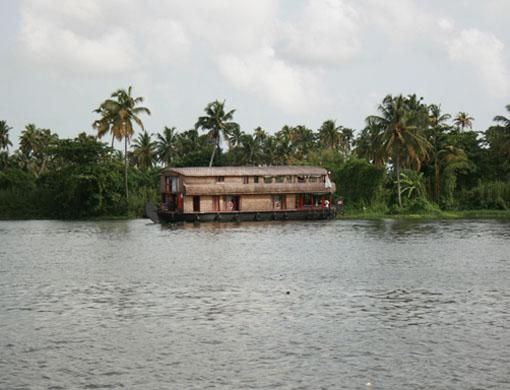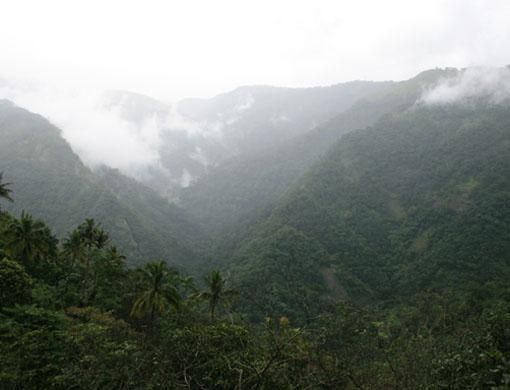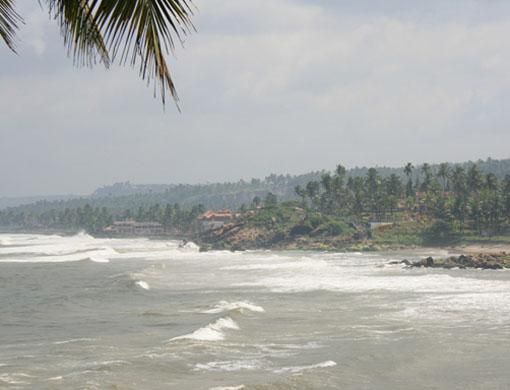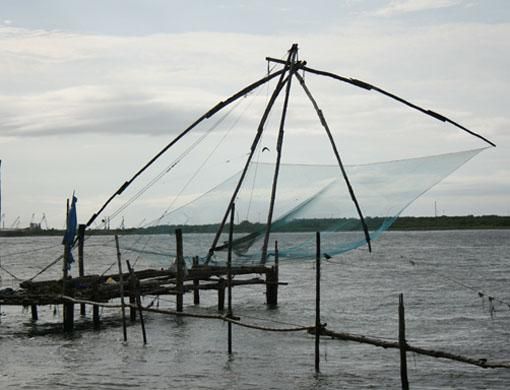As the waves crashed on the black rocks, coating them with white foam, I pondered the journey I had been on. It had all begun in the city of Kochi (Cochin) several days earlier.
Known as the commercial capital of Kerala, Kochi was once called the “Queen of the Arabian Sea'' due to its importance in the Portuguese trade routes.
With a fascinating history and a fine natural harbour, Fort Kochi was a major centre for the spice trade. Chinese fishing nets lined the harbour.
Introduced by traders from the courts of Kublai Khan, they sat atop long wooden poles with water swirling below.
Historic significance
Not far from there was the church of St Francis, built by the Portuguese Franciscan friars in 1503. The remains of Vasco da Gama, who first landed on Kerala's shores in 1498 and set up a spice trading post, were buried here for 14 years and then moved to his homeland in Portugal.
In 1524, on his third visit, he contracted malaria and died in Kochi.
Leaving behind the coastlines and fishing nets of Kochi, we moved upwards, into the highlands of Periyar. Noted for its spice gardens and wildlife sanctuary, Periyar is a favourite with locals and visitors alike.
The monsoon air was fragrant and fresh and the road long and winding. Rubber plantations lined the main highway, each tree with bags tied to it for sap collection.
Speed and spices
In true Indian fashion, our bus driver rumbled down the two-way highway, overtaking cars and trucks at breakneck speed.
With mike in hand, my guide turned around and began explaining the history of Periyar and its spices.
Being the rainy season, the skies began to cloud over.
Donning raincoats and stepping off at one of the many spice gardens that dot the Periyar landscape, we made our way down a path through the rainforest.
The weather, which had worsened since we had reached the gardens, gave us a taste of the true Indian monsoon. Under a blanket of rain and storm clouds, I learnt about pepper, cardamom, cloves, nutmeg, vanilla and cinnamon and the care that goes into cultivating these plants.
It was a surreal experience, standing in the rain, sniffing the spice-filled air. Taking cover under an umbrella, I made a beeline for the bus, trudging through muddy earth.
Delectable delicacies
Kerala's cuisine is unmatchable and the array of dishes at the “back to earth'' resort in Periyar definitely deserves mention.
Accompanied by traditional live Carnatic music, Spice Village offered a dinner spread that easily made gluttons of the most dedicated weight watchers.
Delicious pickles made from bananas, mangoes and carrots were placed at one end and the chef prepared steaming-hot appams to accompany a thick chicken stew. Sweet-rice payasam as dessert was the perfect end to the delectable dinner.
The next morning, as the sun peeped through the rainclouds of the night, I was up for my wildlife boat safari. As the motorboat bobbed its way gently into the still, green waters of the Periyar Lake, thick forests emerged on either side.
Dry, sun-wizened barks stuck out of the water like skeletal remains of long-forgotten trees, lending a forlorn air to the surroundings. Far ahead in the distance, I saw bison treading the banks for a drink.
The wildlife guide called my attention to a pack of wild dogs crossing the lake, a rare sight, apparently. Spanning 777 square kilometres, the Periyar Wildlife Sanctuary was declared a tiger reserve in 1978.
Home to sambar, elephant, gaur, Nilgiri langur, bison and tiger, this reserve is also noted for its deciduous forest, where some trees date back a century or more.
Wilderness resorts
Located within the reserve are three properties owned by the Kerala Tourism Development Corporation — the budget Periyar House, the mid-range Aranya Nivas and the luxury Lake Palace Hotel.
An hour later, the rainclouds cleared and the sun lit up the sky. Elephant sightings are common during the summer, when water resources within the forests dry up, forcing the animals to come out to the lake.
The Periyar reserve organises week-long camping trips inside the more dense areas of the forest.
The largest water body in Kerala, the Vembanad Lake, is the life force of backwater tourism in Kerala. Stretching across Cochin, Allepey and Kottayam, the lake is 14 kilometres at its widest.
Large networks of silvery canals dissect the town of Allepey, earning it the title “Venice of the East''. We settled into comfortable couches aboard a kettuvallam, a houseboat.
Cups of sugary masala chai were served by an elderly man with smiling eyes.
As the motor sprung into action, we took a tour around the lounge and down the corridor into two bedrooms, complete with air-conditioners and attached baths. The boat is made of jack-wood and held in place with coir rope and wooden nails.
Cultural current
Vallam Kali, or the Snake Boat Race, is one of the biggest events in Kerala, held every August. A long boat with more than 100 men glided down the lake towards us.
The men sang in unison, their arms rhythmically ploughing the water with slender oars. Further upstream we saw a second boat, this time with ladies at the oars.
As another large wave crashed on the rocks below, I was brought out of my reverie. The sun glinted off the sea and the horizon spanned like an endless stretch of blue.
Standing on the shores of Kovalam, I knew it had been an incredible journey through Kerala — God's own country indeed!
— Andrea Bailey is a UAE-based freelance writer
Go there . . . Kochi . . . From the UAE . . . From Dubai
Emirates flies daily.
Fare from Dh1,515
From Abu Dhabi
Emirates flies daily.
Fare from Dh1,705
— Information courtesy: The Holiday Lounge by Dnata.
Ph: 04 4380454
Where to stay
Kochi
- Ramada Cochin: Located about an hour's drive from Kochi's airport, the Ramada Cochin is located at the edge of the Vembanad Lake.
The picturesque swimming pool sits just at the border of the property and the rooms facing the lake have some of the best views.
Visit www.ramadacochin.com for more information. - Taj Malabar: This timeless resort sits on the Willingdon Island and has spectacular views of the harbour. Stone elephants adorn the gardens while the palms sway in the breeze blowing inland.
The Heritage wing, built in 1935, bears testament to the grand days of the British Raj, with graceful Victorian interiors, while the Tower wing houses contemporary guest suites.
Visit www.tajhotels.com for more information.
Periyar
- Spice Village: This eco-resort is part of the Clean, Green and Healthy Group, formerly known as the Casino Group of Hotels. The cottages are modelled on the jungle dwellings of the tribals.
With a “back to earth'' belief, Spice Village aims at sustainable tourism while providing limited creature comforts. The resort cultivates organic herbs within the property gardens and recycles resources as much as possible.
Visit www.cghearth.com for more information.
Kovalam
- The Leela Kempinski: This fabulous hotel stands atop rocks facing the sea, with some of the most outstanding views of the Arabian Sea in the whole of Kerala.
The Club is the section of the hotel that adheres to the minimalistic yet plush theme while another section of the hotel faces the sandy beach and has more traditional interiors. The Divya spa is located at one end of the property.
Visit www.theleela.com for more information.










